Originating from the Edo period, Nihachi soba’s unique name and blend of buckwheat and wheat flours have sparked curiosity and debate among culinary enthusiasts. In this article, we invite you to delve deeper into the intriguing history, cultural significance, and culinary craftsmanship behind Nihachi soba, hoping to unravel its mysteries and leave you with a newfound appreciation for this beloved Japanese delicacy. Join us on a journey through the flavors and stories that have shaped Nihachi soba into the iconic dish it is today.
What is Nihachi soba?
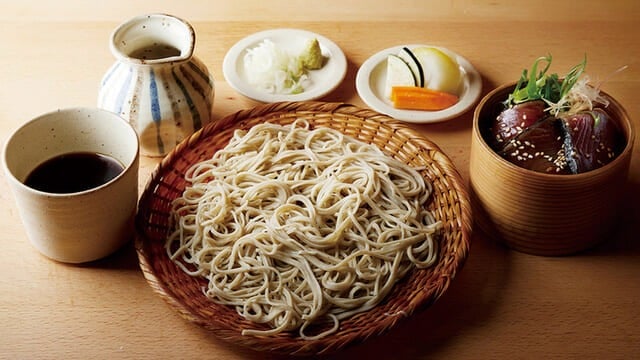
Nihachi soba is a type of Japanese soba noodle made from a blend of two types of flour: 80% buckwheat flour (蕎麦粉) and 20% wheat flour (小麦粉). The name “nihachi” literally translates to “two-eight,” referring to this ratio. The addition of wheat flour makes the noodles smoother and more elastic compared to traditional soba noodles, which are made solely from buckwheat flour. Nihachi soba is popular in various regions of Japan and is often served both hot and cold with a dipping sauce (tsuyu) or in a hot broth (soba soup). It has a slightly different texture and flavor profile compared to traditional soba noodles due to the wheat flour content.
Nihachi soba History
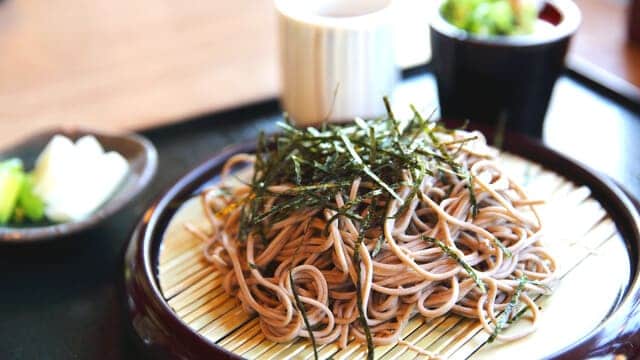
During the time when Nihachi soba cost 16 mon, there’s a famous idea explaining the name: “Nihachi” came from 2 times 8, which equals 16. Back then, people from Edo thought it was cool to use special words only their friends understood. For instance, “Taguru” meant “soba” among carpenters. Nihachi soba is made using a mix of 20% wheat flour and 80% buckwheat flour. Some say the name comes from this blend ratio. Soba researcher Shigeru Niijima (1920-2001) suggests that after the Keio era, when soba prices went over 20 mon, the “2 times 8 = 16 mon” price was before Keio. After Keio, the 80% to 20% ratio theory became correct.
Although Niijima was an excellent researcher, his interpretation of “Nihachi Soba” isn’t perfect, leaving room for more research. So, why do you think it’s called “Nihachi Soba”? Maybe ponder over a bowl of soba, which can be made with 100% buckwheat if you prefer.
For your information, here are the price trends of soba during the Edo period. In the Bunsei era (1818-1830), the cost of buckwheat noodles became 16 mon. Before that, it was cheaper, ranging from about 7 to 14 mon. During the Tenpo era (1830-1844), it stayed at 16 mon, but briefly dropped to 15 mon due to a rule against extravagance. In the Manen era (1860-1861), it went back to 16 mon. Later, during the Keio period, it became more expensive, ranging from 20 to 50 mon.
Taste and texture of Nihachi soba
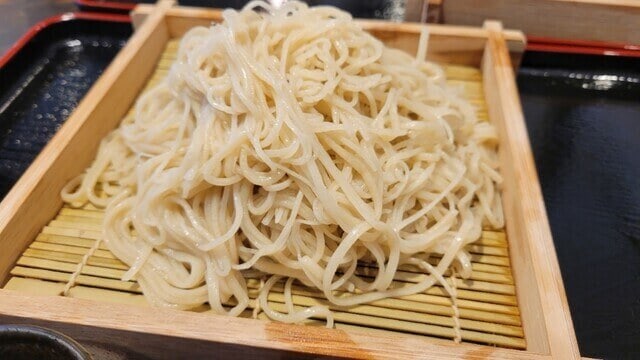
Locals characterize Nihachi soba is by its smooth texture and smooth texture . The thin and long noodles are unique to Nihachi soba. It is popular for its suppleness and firmness at the same time, and is the most commonly eaten type of soba.
Difference between “Nihachi Soba” and “Juwari Soba”

Juwari soba/Towari soba” is a type of soba made only with buckwheat flour without any binder. The major difference between Nihachi soba and Juwari soba is the proportion of buckwheat flour. Try comparing the different flavors of nihachi soba, made with wheat flour for a smoother taste, and juwari soba, which has the rich aroma of soba.
Which is correct, the 28 to 16 cents price theory or the ratio mix theory?
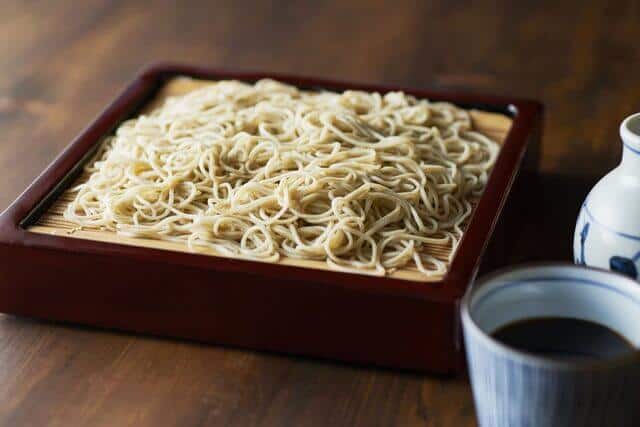
According to Nikkoku Seifun Corporation, locals called it this way when the price of soba was 16 mon, and after the Keio period (1865-68) when the price of soba exceeded 20 cents, it became 16. The most popular theory is it referred to soba made with 20% wheat flour. However, it seems that there were also things called 28 udon and 26 noodles. Various discussions have been held for a long time, and there is still no definitive answer. One thing is clear: 28 is a word that was born from the “iki” of Edo people who tried to express numbers in a cool way through slang or abbreviations, and 28 soba was a word that appealed to the tastes and feelings of Edo townspeople.
Nihachi soba FAQ
- Is “Nihachi Soba” from Itomen named after its blend ratio?
-
In Edo-period genre paintings, we see “28 udon noodles” and “Shinshu specialties 26,” suggesting the origin of “28 soba” might be linked to the word “pun.” Itomen named their noodles “Nihachi Udon” and “Nihachi Soba” after popular fast foods among commoners, as seen in rakugo stories like “Toki Udon” and “Toki Soba.” Despite this, Itomen’s “Nihachi Soba” is named for its original origin (substance theory) rather than its composition, and been cherished for nearly 50 years since its introduction in 1976.
- What percentage of buckwheat flour is in Itomen’s “Nihachi Soba”?
-
According to the quality labeling standards for dry noodles, the use of buckwheat must be at least 30%. Itomen’s soba exceeds this requirement, ensuring its quality and authenticity.
Nihachi soba Recipe
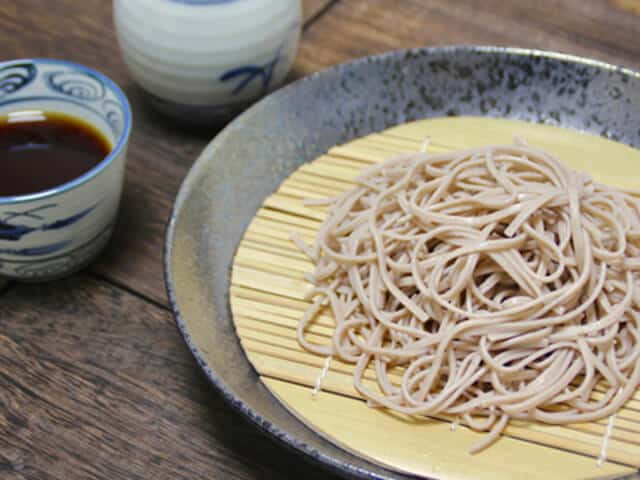
Nihachi soba Ingredients
| Ingredients of Nihachi soba for 4 persons | Measurements |
|---|---|
| Buckwheat flour | 400g |
| Strong flour | 100g |
| Water | 225g |
| Rice flour and Cornstarch | 100g |
How to make Nihachi soba?
Place the buckwheat and all-purpose flours in large bowl, along with the cold water. Mix and massage the dough until it forms a single mass.
Remove the dough from the bowl to a cutting board. Working quickly and using the heels of your hands, continue to knead firmly until a smooth dough forms. The final dough will be soft, smooth and not sticky. This will take about 8-10 minutes.
Place the ball on the board and lightly sprinkle cornstarch over the top. Using your palm and the heel of your hand, flatten the ball into a disk about one-half inch thick.
Use a rolling pin to roll the disk into a rectangle (about 12 by 20 inches) one-eighteenth inch thick. Generously sprinkle cornstarch over half of the dough and fold the other half of the dough over.
Starting along the short, folded side of the dough, slice it into very thin (about one-sixteenth inch) noodles. Keep the noodles loosely covered with plastic wrap while you boil the water for cooking.
Bring a large pot of water (at least 2 gallons) to a boil over high heat. Gently drop the soba into the boiling water. Keep the water boiling vigorously to prevent the noodles from sticking together. Cook the noodles to al dente, about 90 seconds.
Immediately remove the noodles to a strainer set in a bowl of ice water to stop the cooking. Prepare a second bowl of ice water and transfer to the second bowl to remove any surface starch and cool completely. Serve with condimen
ts.
Where to buy Nihachi soba?
Kanda Sarugakucho Asanoya (神田猿楽町浅野屋)

This is a long-established store that is in business for over 80 years, and the deep green walls are lined with well-worn and polished furniture, creating a scene full of emotion. The restaurant is bustling with people and full of the energy typical of a soba restaurant.The menu has a wide variety of variations, and the dark-colored soba soup is truly Edomae.

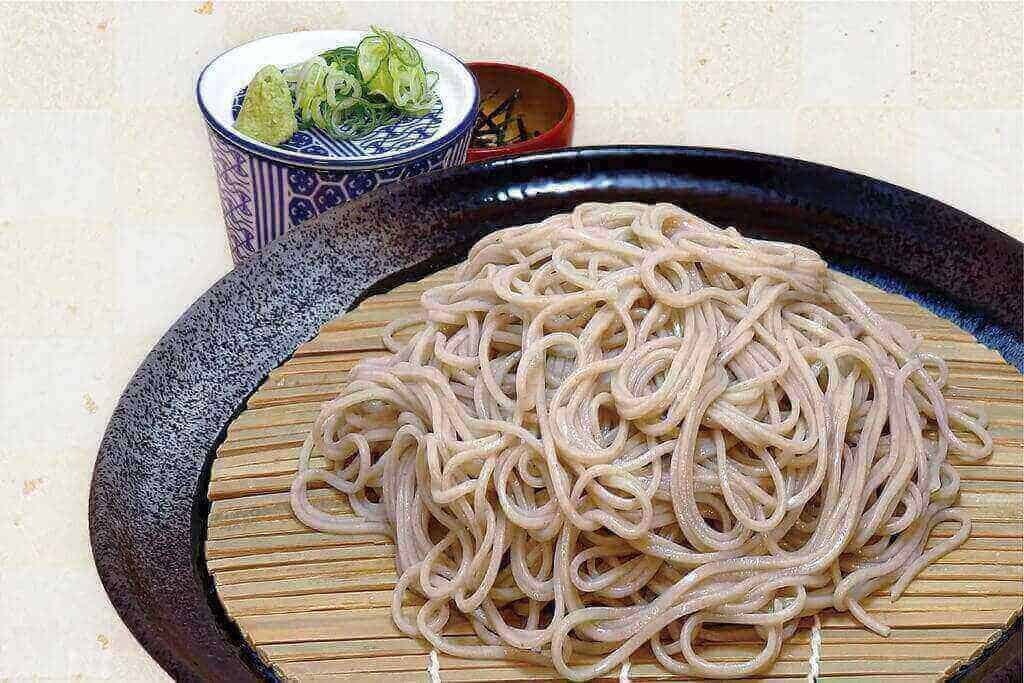
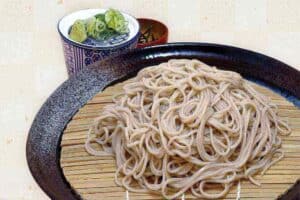
Comments